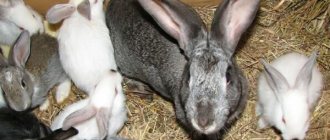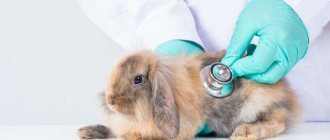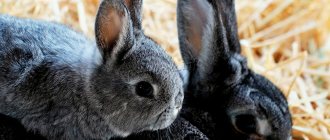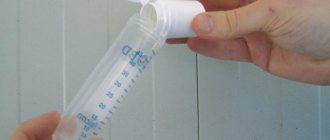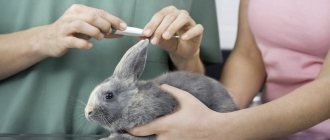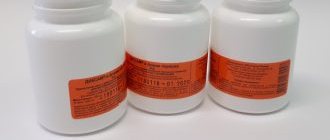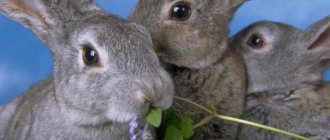Many novice rabbit breeders ask the question: “What to do if rabbits have bumps all over their bodies and on their heads?” Alas, most likely these are signs of a very dangerous disease called myxomatosis.
It can affect both young and adult animals. If treatment is not started in time, you can lose all the animals. How to recognize this disease in rabbits in time, how to treat it and what measures should be taken to prevent it - we will consider further.
What is myxomatosis?
Myxomatosis is a dangerous infectious disease of rabbits, the causative agent of which is a virus transmitted by blood-sucking insects (mainly mosquitoes).
Both wild and domestic rabbits are susceptible to this dangerous disease. One form of myxomatosis is fatal to animals, while the other has its own treatment. The main method of preventing this disease is vaccination. Vaccinations will no longer help animals that are already sick; intensive medical therapy must be started.
A sick rabbit immediately catches your eye. The mucous membrane of the eyes becomes very swollen and swollen, purulent discharge appears from the eyes and nose, and bumps (bubbles) appear throughout the body.
One of the main questions that rabbit breeders ask is: “Is the meat of a rabbit with myxomatosis edible?” There is no clear answer, but there are two options. If the animal survives as a result of treatment and the signs of the disease have disappeared (full recovery has occurred), then after observing it for some time, it can be sent for slaughter and after that the resulting meat can be eaten. If a rabbit with myxomatosis was unable to cope and as a result died from it, then eating its meat is prohibited.
The carcasses of animals that died from this disease are burned, and the cages in which they were kept are thoroughly disinfected. Healthy rabbits that have not yet become infected are quarantined and given comprehensive vaccination.
A characteristic feature of this extremely dangerous disease is that the mortality rate among adults is very high, and rabbits under the age of one month, as a rule, survive infection with myxomatosis and recover over time. To be fair, it should be said that myxomatosis in such babies is an extremely rare occurrence.
More on the topic: How much does a mother rabbit feed her babies? What to do if the rabbit has no milk?
The most common tumors in rabbits
Most often, bunions appear on the neck, head and stomach of rabbits. Although during examination and palpation other parts of the body should not be missed.
Infectious fibromatosis
Viral fibromatosis of rabbits in adults is caused by the formation of connective tissue growths under the skin and mucous membranes. In newborn rabbits, the disease manifests itself as a generalized lesion of almost the entire surface of the skin.
The causative agent of fibromatosis is transmitted through the bites of blood-sucking insects. Young animals are most susceptible. As rabbits age, their resistance to this virus increases.
The incubation period of the pathology lasts 2-3 days. After this, ovoid dense bumps appear under the skin on the body of adult rabbits, the diameter of which after a week is 3-4 cm. They become hemorrhagic and, as a result of necrotic processes, gradually become covered with scabs.
After about 2 weeks, the tumors develop back, and soon scars remain in their place. In some individuals, the causative agent of fibromatosis provokes the development of conjunctivitis, which is accompanied by the formation of small round bumps on the eyelids.
Throughout the entire period of the disease, the general condition of adult rabbits remains stable. But in rabbits, multiple tumors cause exhaustion and lead to death. In isolated cases, the bumps resolve on their own, and the babies recover.
For infectious fibromatosis, symptomatic treatment is carried out. Sick pets are isolated from healthy animals, and the cages are disinfected.
Breast adenoma
A lump on a rabbit's belly may indicate the development of a mammary adenoma. It is the most common form of neoplasm. This is due to good blood supply to this area and the speed of metabolic processes, which predispose to accelerated uncontrolled cell division.
An adenoma is a benign tumor that is enclosed in a capsule. It can be easily felt and rolls under the fingers, which is not typical for malignant neoplasms. An adenoma can take the form of either a convex soft lump or a hard, flat prominence.
Benign tumors of the mammary glands in rabbits are surgically removed if they do not affect the lymph nodes and vessels. To clarify the nature of the neoplasm, histological studies are carried out.
Important! To avoid the possibility of relapses, a veterinarian removes the entire mammary gland, and not just the damaged area.
Symptoms of myxomatosis
The incubation period for this infection can last from five days to two weeks (depending on the viral strain). Veterinary experts distinguish two forms of this disease - edematous and nodular.
There are significant differences in the clinical picture of these types of myxomatosis. However, there are a number of external signs characteristic of both forms of the disease:
- the appearance of conjunctivitis and purulent discharge from the eyes, which over time turns into edema and provokes an ocular inflammatory process;
- lethargy of the animal, a sharp decrease in its motor activity;
- the animal’s body temperature rises, rising above 42 degrees;
- hair loss is observed;
- swelling of the lips, nose and eyelids appears;
- the ears droop, fibrous nodes form in them, as well as on the paws and nose;
- breathing becomes difficult and heavy, shortness of breath appears, and distinct wheezing is heard.
Abscess in a rabbit
An abscess in a rabbit is a cavity with exudate, formed as a result of acute inflammation, in which focal melting of tissue occurs.
Suppuration is a localized subcutaneous protective-adaptive mechanism of the body that occurs when staphylococci, streptococci, and other pyogenic microorganisms penetrate into damaged tissues of the skin and mucous membranes.
An abscess is formed when the integrity of the integument is violated and it is contaminated.
- introduction of foreign bodies into tissue
- bites, cuts, punctures
- injured as a result of a fight between a rabbit and fellow tribesmen
- administration of cold, non-sterile, irritating agents subcutaneously/intramuscularly
- some infections
Development mechanism
Pathogenic agents, once in a favorable environment (high humidity, temperature), begin rapid development, resulting in swelling of the affected area and pain.
Trying to suppress the infection, the body intensively produces white blood cells (leukocytes), which are sent to the sore spot, absorb and destroy infected cells.
With a deep and extensive process, sepsis (blood poisoning) is high, so the help of a ratologist is required. Clinical signs of an abscess in a rabbit Suppuration has the shape of a hemisphere.
At the beginning, a limited swelling of a dough-like consistency forms, which fluctuates (oscillates) and is hot to the touch. There may be a general increase in body temperature and signs of general intoxication.
General condition of the rodent:
- loss of appetite
- the appearance of a compaction at the site of the lesion
- when opening an abscess - sticky wet fur
Rabbits often develop a lump in the muzzle area. This is due to the pricking of the soft tissues of the cheeks and lips by the awn of grain, small straw, and thin stems of branches and plants.
If the gums, cheeks, palate, or tongue are injured, the animal refuses to eat, drooling appears, and a lump forms on the cheek.
Types of abscesses in rabbits
Hot - acute inflammation of the superficial layers of soft tissue, characterized by the rapid formation of a cavity in which purulent contents form. There is a tendency to spontaneous opening.
Cold - occurs when pathogens of infectious diseases (tuberculosis, brucellosis, mycoses, streptotrichosis) invade the body.
A distinctive feature is the slow course, in which the signs of inflammation are not clearly expressed.
If the cause of the abscess is pathogenic fungi, then a large capsule filled with thick pus is formed. A frequent complication is fistulas, which are difficult to treat.
Swelling (spilled) - occurs when pus flows into the lower layers of tissue and melts them with pyogenic bacteria.
Metastatic is the most dangerous type of abscess, which forms in internal organs, lymph nodes, and bone marrow. The occurrence of the pathological process is due to the penetration of bacteria from the primary focus to the site of localization through the bloodstream and lymphatic ducts.
Diagnostics
Superficial abscesses in rabbits are diagnosed visually. Intermuscular lesions of the deep layers are confirmed with a puncture and laboratory blood test.
Abscesses of internal organs are identified by X-ray examination and hematological analysis.
Treatment of ulcers
Cold, palpation and massage are contraindicated! If signs of an abscess appear, heat (compress, heating pad) should be used to soften the tissue and remove crusts and dirt around the hole.
After warming the affected area, it is necessary to clean the area of the abscess with hydrogen peroxide.
To remove the contents from the capsule, you must gently press on the seal so that the pus, ichor and blood come out. This must be done until the discharge from the hole stops.
Then you need to treat the wound with hydrogen peroxide and apply antibiotic ointment.
To prevent the rabbit from developing an abscess again, as well as complications after tissue melting, seek help from a rodent specialist (ratologist), who will prescribe further treatment.
Edema form of the disease
This form of myxomatosis is characterized by a very rapid and severe course and treatment for it has not yet been invented.
Large bumps in rabbits that are filled with fluid, clearly audible wheezing, purulent nasal discharge - all these are symptoms of edematous myxomatosis. The animals stop eating and die within ten days. The carcasses of dead rabbits must be immediately disposed of (by burning), and under no circumstances should they be eaten. Rabbits that have managed to avoid infection are urgently isolated from the sick, quarantined and, without fail, vaccinated (associated VGBV vaccination).
Psoroptosis (ear scabies)
The source of this infectious disease is ear mites. This insect hides in the ear canals and is difficult to notice. The incubation period is 3-5 days. If rabbits are kept in cages, the disease becomes widespread. The epidemic usually rages in winter and spring.
Causes of ear scabies:
- Infection occurs when wax falls out of the ears of a sick animal, or through contact with its dander.
- Equipment and other items that were used when caring for a sick animal and were not disinfected.
- Scabies can be transferred from sick rabbits to healthy ones by people caring for them.
Symptoms:
- Anxiety, animals rub their ears with their paws, shake their heads.
- In mild forms, inflammation develops, reminiscent of weeping eczema.
- There are red swellings on the inner surfaces of the ears, which eventually become blisters. The latter burst, yellow liquid flows out, it dries out, turning into crusts. The ear canal becomes clogged with lumps of wax.
- In severe forms, the lesions merge, and abundant discharge of sulfur and pus is observed. The resulting crusts completely cover the ear canal.
If ear scabies is not treated, the inflammation penetrates deeper - to the brain. The meninges are affected, and the animal experiences a central nervous system disorder.
The diagnosis of psoroptosis is made after examination of scrapings. To identify a tick on your own, take a scraping from the ears and place it in Vaseline oil. Under a magnifying glass you can see ticks - if there are any.
Treatment of psoroptosis:
- Isolation of sick animals from the herd,
- Treatment of the ears with acaricidal sprays, foams and ointments - Psoroptol, Tsiodrin, Acrodex, Dicresil. The treatment is done once a week until the ticks are completely eliminated.
- Injections are administered subcutaneously for general therapy - Baymek, Ivomek.
Preventive measures:
- Antiparasitic treatment of enclosures. Cleaning is carried out once every six months - at least. Disinfect tools and equipment.
- Keeping new animals in quarantine for a month. During this time, newly purchased rabbits are examined several times for the presence of ear scabies.
- Each animal is periodically examined for the presence of parasites. The minimum frequency of inspections is once a month.
- To avoid infection of the young, pregnant females are carefully examined a couple of weeks before giving birth. Carry out preventive treatment of the ears.
How to treat ear mites in rabbits is described in the video below:
Myxomatosis in rabbits - nodular form
This form of the disease is milder and, as a result, curable.
The survival rate with timely initiation of treatment is about 50 percent of all sick animals.
The meat of cured and surviving rabbits is edible.
The clinical picture of this form of the disease looks like this: small nodular formations appear on the body of rabbits, especially clearly visible near the eyes and on the surface of the ears. Then purulent conjunctivitis develops. Over time, other symptoms appear - runny nose, wheezing, refusal to eat. The duration of myxomatosis in the nodular form is about one and a half months. If you actively support your rabbit with appropriate therapy during this time, there is a good chance that he will survive and make a full recovery. This infection usually leaves no traces on the animal’s body; only small scars are possible on individual parts of the body.
More on the topic: Peculiarities of breeding breeding rabbits
Symptoms and signs of infection
Symptoms of myxomatosis differ depending on the form of the disease. Manifestations of the disease in the edematous form, which is the most dangerous, are as follows:
- Oppression. The rabbits are weakened and lie huddled in a corner.
- Refusal of food.
- Frequent heavy breathing.
- The temperature rises to 41 degrees - later it returns to normal.
- Conjunctivitis. The eyelids of animals increase in size, turn red, and pus is released from the eyes.
- Bumps appear in the neck, on the stomach, on the nose, on the ears. Sometimes they are small, no larger than a grain, in other cases the tumors reach the size of a pigeon egg. When the bumps are localized on the head, thick folds form on the skin. The rabbit resembles a lion, which is why myxomatosis is sometimes called lion's head disease.
- The animal's ears droop.
- The coat looks dirty and loses its shine.
Sign of illness
The nodular form of myxomatosis is characterized by the following symptoms:
- Formation of small seals on the body. The skin in these places first turns red, after which small nodules appear. They may disappear and then appear again. The localization area of the nodes is the head.
- Conjunctivitis may develop later. The rabbit's eyelids become swollen, almost never open, and a purulent secretion is released from the eyes.
- Runny nose.
Attention! With the nodular form of myxomatosis, stomatitis and pneumonia often occur if a bacterial infection is associated. In this case, the symptoms may differ from those listed above.
Ways to combat myxomatosis
Rabbit myxomatosis, like any other disease, is better to prevent than to treat later.
Prevention of this disease consists of timely vaccination. Usually, for vaccination of animals, a complex vaccine is used (Rabbit Viral Hemorrhagic Disease), which also protects against myxomatosis. However, this vaccine cannot be used as a treatment for already sick animals. Treatment of rabbits for myxomatosis consists of antibiotic therapy using immunostimulating drugs and iodine.
The most popular treatment regimen is subcutaneous injections. The following medications are used for them: Gamavit (one injection per day with a dose of 2 milliliters) or Fonespril (one milliliter once a day). These drugs are usually used in combination with a drinking drug such as Baytril (twice a day, one milliliter for every 10 kilograms of the animal’s weight). To make breathing easier for rabbits, drops are placed in the nose. If burst cones appear on the body, they are treated along the contour with an alcohol solution of iodine.
Features of vaccination
The associated VGBV vaccine includes microparticles of both viruses (myxomatosis and hemorrhagic). It is applicable to both young and adult animals.
This vaccination should not be given to newborn rabbits! The first vaccination can be given to cubs at the age of one and a half months (six weeks old), strictly according to the instructions. Repeated vaccination – after three months. VGBV vaccination is contraindicated for sick adults!
Igor Nikolaev
auto RU
Healthy female rabbits bearing offspring can be vaccinated at any stage of pregnancy. When using reusable needles and syringes, they should be boiled first before the injection, and then again 15-20 minutes after each injection. For subcutaneous administration, it is better to use an injector, which must also be sterilized both before and after use, using 70 percent alcohol.
To successfully prevent the disease, vaccination should be carried out twice a year - in the fall (in September) and in the spring (in March).
Some rabbit breeders vaccinate with VGBK once a quarter, but this is at the discretion of the breeder.
More on the topic: Advantages and disadvantages of rabbits Poltava silver
Myxomatosis vaccine
Vaccination against myxomatosis helps protect livestock from a dangerous disease. It is recommended to do it when the rabbits are 1.5 months old. There are different vaccines - single-component or complex, containing inactivated strains of the myxomatosis virus and rabbit hemorrhagic disease. If single-component vaccinations are used to immunize young animals, then the animals are first vaccinated against VGBV at the age of 4 weeks, and after 2 weeks - against myxomatosis.
Attention! The vaccine does not cure the disease, but helps develop immunity to it in healthy animals.
Only healthy animals that have previously been dewormed are allowed to be vaccinated. The vaccination is well tolerated, and immunity to myxomatosis after administration of the drug is developed after 7-9 days. If a rabbit gets sick after vaccination, it means it was already infected.
Revaccination after the first vaccination is carried out after 3 months, and then every six months. If this schedule is strictly followed, myxomatosis will not threaten the livestock, since immunity after administration of the drug lasts for 7-8 months.
Revaccination of a rabbit
